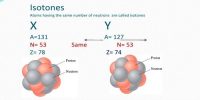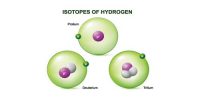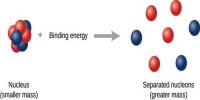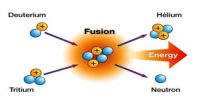Giant resonances are usually classified by three characteristic quantum numbers L, S and T.
Where,
L = orbital angular momentum
S = intrinsic spin
T = isospin
L can have the values, 1,2,3,…………..
The spin quantum no. S is either 0 or 1.
The isospin quantum no. T which is also either 0 or 1 (in this case) T determines the relative behavior of protons and neutrons.
A giant resonance is called isoscalar giant resonance when T = 0
Ie; protons and neutrons oscillate in phase.
Example: electric monopole resonance (L = 0, S = 0, T = 0).
A giant resonance is called isovector giant resonance when T = 1
Ie; protons and neutrons oscillate with opposite phase.
Example: Gomow-Teller resonance (L = 0, S = 1, T = 1).














